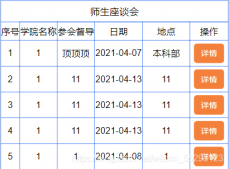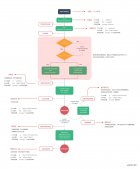vite
尤大在 Vue 3.0 beta 直播中推荐了 vite 的工具,强调:针对Vue单页面组件的无打包开发服务器,可以直接在浏览器运行请求的 vue 文件
很新颖,这篇博客用它来搭建一个 vue3 的项目试试
Vite 是面向现代浏览器,基于原生模块系统 ESModule 实现了按需编译的 Web 开发构建工具。在生产环境下基于 Rollup 打包
- 快速冷启动服务器
- 即时热模块更换(HMR)
- 真正的按需编译
node >= 10.16.0
搭建
使用 vite 搭建项目
|
1
|
npm init vite-app <project-name> |
安装 typescript、vue-router@next、axios、eslint-plugin-vue、sass 等相关插件
配置
vite.config.ts
vite.config.ts 相当于 @vue-cli 项目中的 vue.config.js
我这简单配置一下:
|
1
2
3
4
5
6
7
8
9
10
11
|
import path from 'path'module.exports = { alias: { '/@/': path.resolve(__dirname, './src') }, optimizeDeps: { include: ['lodash'] }, proxy: {}} |
Router
在 src 下新建 router 文件夹,并在文件夹内创建 index.ts
|
1
2
3
4
5
6
7
8
9
10
11
12
13
14
15
16
17
18
19
|
import { createRouter, createWebHistory } from 'vue-router'const routes = [ { path: '/', name: 'Home', component: () => import('/@/views/Home.vue') }, { path: '/lifeCycle', name: 'lifeCycle', component: () => import('/@/views/LifeCycle.vue') }]export default createRouter({ history: createWebHistory('/krry/'), routes}) |
ts types
项目根目录下新建 tsconfig.json 写入相关配置
|
1
2
3
4
5
6
7
8
9
10
11
12
13
14
15
16
17
18
19
20
21
22
23
24
25
26
27
|
{ "compilerOptions": { ...// 其他配置 "paths": { "/@/*": [ "src/*" ] }, "lib": [ "esnext", "dom", "dom.iterable", "scripthost" ] }, "include": [ "src/**/*.ts", "src/**/*.tsx", "src/**/*.vue", "src/types/images.d.ts", "tests/**/*.ts", "tests/**/*.tsx" ], "exclude": [ "node_modules" ]} |
src 目录下新建 types 文件夹,里面需要配置 ts 的类型
shims-vue.d.ts
|
1
|
declare module '*.vue' {} |
images.d.ts
|
1
2
3
4
5
6
7
|
declare module '*.svg'declare module '*.png'declare module '*.jpg'declare module '*.jpeg'declare module '*.gif'declare module '*.bmp'declare module '*.tiff' |
main.ts
|
1
2
3
4
5
6
7
8
|
import { createApp } from 'vue'import router from '/@/router'import App from '/@/App.vue'const app = createApp(App)app.use(router)app.mount('#app') |
然后就可以快乐地写代码了
vue3 知识
setup
vue3 中用 setup 函数整合了所有的 api;只执行一次,在生命周期函数前执行,所以在 setup 函数中拿不到当前实例 this,不能用 this 来调用 vue2 写法中定义的方法
它将接受两个参数:props、context
|
1
2
3
4
5
6
|
// props - 组件接受到的属性 context - 上下文 setup(props, context) { return { // 要绑定的数据和方法 }} |
props
setup 函数中的 props 是响应式的,当传入新的 prop 时,它将被更新
但是,因为 props 是响应式的,不能使用 ES6 解构,因为它会消除 prop 的响应性
如果需要解构 prop,可以通过使用 setup 函数中的 toRefs 来安全地完成此操作
|
1
2
3
4
5
6
|
import { toRefs } from 'vue'setup(props) { const { title } = toRefs(props) console.log(title.value)} |
context
context 暴露三个组件的 property:{ attrs, slots, emit }
它是一个普通的 JavaScript 对象,不是响应式的,这意味着你可以安全地对 context 使用 ES6 解构
生命周期
通过在生命周期钩子前面加上 “on” 来访问组件的生命周期钩子
因为 setup 是围绕 beforeCreate 和 created 生命周期钩子运行的,所以不需要显式地定义它们
换句话说,在这两个钩子中编写的任何代码都应该直接在 setup 函数中编写
|
1
2
3
4
5
6
7
8
9
10
11
12
13
14
15
16
17
18
19
20
21
22
23
24
25
26
27
|
setup() { onMounted(() => { console.log('组件挂载') }) onUnmounted(() => { console.log('组件卸载') }) onUpdated(() => { console.log('组件更新') }) onBeforeUpdate(() => { console.log('组件将要更新') }) onActivated(() => { console.log('keepAlive 组件 激活') }) onDeactivated(() => { console.log('keepAlive 组件 非激活') }) return {}} |
ref、reactive
ref 可以将某个普通值包装成响应式数据,仅限于简单值,内部是将值包装成对象,再通过 defineProperty 来处理的
通过 ref 包装的值,取值和设置值的时候,需用通过 .value来进行设置
可以用 ref 来获取组件的引用,替代 this.$refs 的写法
reactive 对复杂数据进行响应式处理,它的返回值是一个 proxy 对象,在 setup 函数中返回时,可以用 toRefs 对 proxy 对象进行结构,方便在 template 中使用
使用如下:
|
1
2
3
4
5
6
7
8
9
10
11
12
13
14
15
16
17
18
19
20
21
22
23
24
25
26
27
28
29
30
31
32
33
34
35
36
37
38
39
40
41
42
43
44
45
46
47
48
49
50
51
52
53
|
<template> <div> <div> <ul v-for="ele in eleList" :key="ele.id"> <li>{{ ele.name }}</li> </ul> <button @click="addEle">添加</button> </div> <div> <ul v-for="ele in todoList" :key="ele.id"> <li>{{ ele.name }}</li> </ul> <button @click="addTodo">添加</button> </div> </div></template><script>import { ref, reactive, toRefs } from 'vue'export default { setup() { // ref const eleList = ref([]) function addEle() { let len = eleList.value.length eleList.value.push({ id: len, name: 'ref 自增' + len }) } // reactive const dataObj = reactive({ todoList: [] }) function addTodo() { let len = dataObj.todoList.length dataObj.todoList.push({ id: len, name: 'reactive 自增' + len }) } return { eleList, addEle, addTodo, ...toRefs(dataObj) } }}</script> |
computed、watch
|
1
2
3
4
5
6
7
8
9
10
11
12
13
14
|
// computedlet sum = computed(() => dataObj.todoList.length + eleList.value.length)console.log('setup引用computed要.value:' + sum.value)// watchwatch( eleList, (curVal, oldVal) => { console.log('监听器:', curVal, oldVal) }, { deep: true }) |
watchEffect
响应式地跟踪函数中引用的响应式数据,当响应式数据改变时,会重新执行函数
|
1
2
3
4
5
6
|
const count = ref(0)// 当 count 的值被修改时,会执行回调const stop = watchEffect(() => console.log(count.value))// 停止监听stop() |
还可以停止监听,watchEffect 返回一个函数,执行后可以停止监听
与 vue2 一样:
|
1
2
3
4
|
const unwatch = this.$watch('say', curVal => {})// 停止监听unwatch() |
useRoute、useRouter
|
1
2
3
4
|
import {useRoute, useRouter} from 'vue-router'const route = useRoute() // 相当于 vue2 中的 this.$routeconst router = useRouter() // 相当于 vue2 中的 this.$router |
route 用于获取当前路由数据
router 用于路由跳转
vuex
使用 useStore 来获取 store 对象 从 vuex 中取值时,要注意必须使用 computed 进行包装,这样 vuex 中状态修改后才能在页面中响应
|
1
2
3
4
5
6
7
8
9
10
|
import {useStore} from 'vuex'setup(){ const store = useStore() // 相当于 vue2 中的 this.$store store.dispatch() // 通过 store 对象来 dispatch 派发异步任务 store.commit() // commit 修改 store 数据 let category = computed(() => store.state.home.currentCagegory return { category }} |
到此这篇关于vite+ts快速搭建vue3项目以及介绍相关特性的文章就介绍到这了,更多相关vite+ts搭建vue3内容请搜索服务器之家以前的文章或继续浏览下面的相关文章希望大家以后多多支持服务器之家!
原文链接:https://www.cnblogs.com/ainyi/p/13927377.html



















